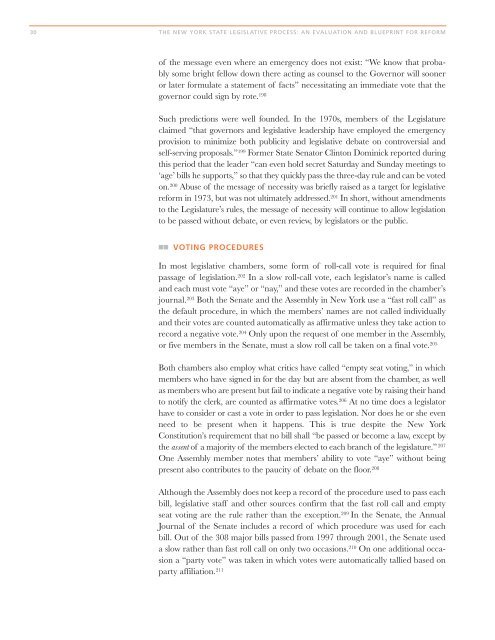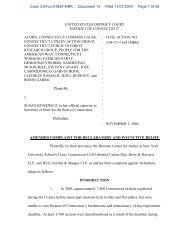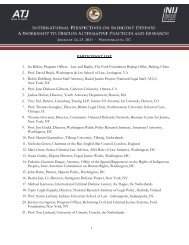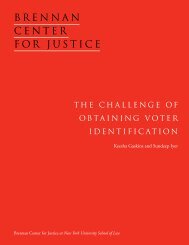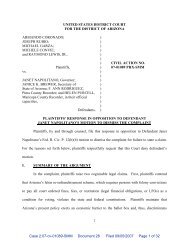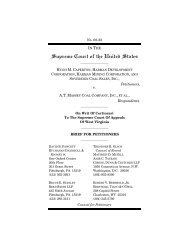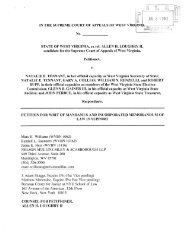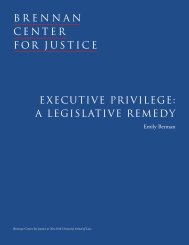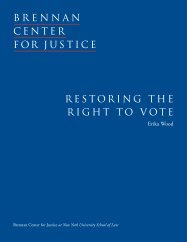THE NEW YORK STATE LEGISLATIVE PROCESS: AN ...
THE NEW YORK STATE LEGISLATIVE PROCESS: AN ...
THE NEW YORK STATE LEGISLATIVE PROCESS: AN ...
You also want an ePaper? Increase the reach of your titles
YUMPU automatically turns print PDFs into web optimized ePapers that Google loves.
30 <strong>THE</strong> <strong>NEW</strong> <strong>YORK</strong> <strong>STATE</strong> <strong>LEGISLATIVE</strong> <strong>PROCESS</strong>: <strong>AN</strong> EVALUATION <strong>AN</strong>D BLUEPRINT FOR REFORM<br />
of the message even where an emergency does not exist: “We know that probably<br />
some bright fellow down there acting as counsel to the Governor will sooner<br />
or later formulate a statement of facts” necessitating an immediate vote that the<br />
governor could sign by rote. 198<br />
Such predictions were well founded. In the 1970s, members of the Legislature<br />
claimed “that governors and legislative leadership have employed the emergency<br />
provision to minimize both publicity and legislative debate on controversial and<br />
self-serving proposals.” 199 Former State Senator Clinton Dominick reported during<br />
this period that the leader “can even hold secret Saturday and Sunday meetings to<br />
‘age’ bills he supports,” so that they quickly pass the three-day rule and can be voted<br />
on. 200 Abuse of the message of necessity was briefly raised as a target for legislative<br />
reform in 1973, but was not ultimately addressed. 201 In short, without amendments<br />
to the Legislature’s rules, the message of necessity will continue to allow legislation<br />
to be passed without debate, or even review, by legislators or the public.<br />
■■ VOTING PROCEDURES<br />
In most legislative chambers, some form of roll-call vote is required for final<br />
passage of legislation. 202 In a slow roll-call vote, each legislator’s name is called<br />
and each must vote “aye” or “nay,” and these votes are recorded in the chamber’s<br />
journal. 203 Both the Senate and the Assembly in New York use a “fast roll call” as<br />
the default procedure, in which the members’ names are not called individually<br />
and their votes are counted automatically as affirmative unless they take action to<br />
record a negative vote. 204 Only upon the request of one member in the Assembly,<br />
or five members in the Senate, must a slow roll call be taken on a final vote. 205<br />
Both chambers also employ what critics have called “empty seat voting,” in which<br />
members who have signed in for the day but are absent from the chamber, as well<br />
as members who are present but fail to indicate a negative vote by raising their hand<br />
to notify the clerk, are counted as affirmative votes. 206 At no time does a legislator<br />
have to consider or cast a vote in order to pass legislation. Nor does he or she even<br />
need to be present when it happens. This is true despite the New York<br />
Constitution’s requirement that no bill shall “be passed or become a law, except by<br />
the assent of a majority of the members elected to each branch of the legislature.” 207<br />
One Assembly member notes that members’ ability to vote “aye” without being<br />
present also contributes to the paucity of debate on the floor. 208<br />
Although the Assembly does not keep a record of the procedure used to pass each<br />
bill, legislative staff and other sources confirm that the fast roll call and empty<br />
seat voting are the rule rather than the exception. 209 In the Senate, the Annual<br />
Journal of the Senate includes a record of which procedure was used for each<br />
bill. Out of the 308 major bills passed from 1997 through 2001, the Senate used<br />
a slow rather than fast roll call on only two occasions. 210 On one additional occasion<br />
a “party vote” was taken in which votes were automatically tallied based on<br />
party affiliation. 211


